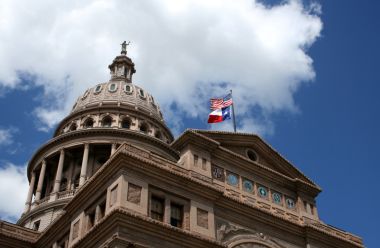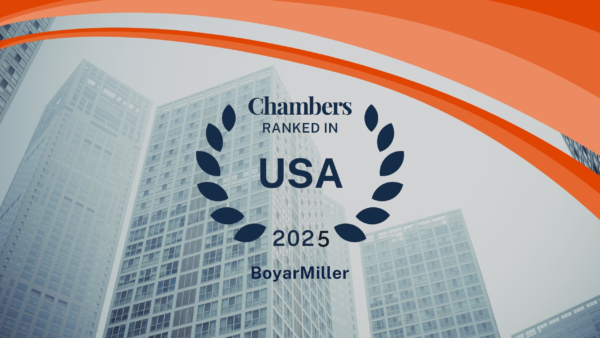With a deep understanding of your business alongside clear and honest communication, we help clients face challenges fearlessly.
Contact us today to learn more about our services and how we can help drive solutions.
More Clarification on Loan Forgiveness: Time Period to Apply and Added Borrower Protections
July 6, 2020
A new Interim Final Rule (the “IFR”) was posted by the Department of Treasury on June 22, 2020. The primary purpose of this new rule is to update prior interim finals based upon amendments to the CARES Act made by the Flexibility Act enacted on June 5, 2020; however, there are a few new concepts set forth in the IFR as follows:
When must a borrower apply for loan forgiveness or start making payments on a loan?
A loan forgiveness application can be submitted any time on or before the maturity date of the loan, including before the end of the covered period if the borrower has used all of the PPP loan proceeds for which forgiveness is requested. If a borrower elects to submit a loan forgiveness application before the end of the applicable 8-week or 24-week covered period, the borrower must take into account any salary reductions in excess of 25% for the full length of the covered period. Further, as set forth in the Flexibility Act, if a borrower does not apply for forgiveness within 10 months after the last day of the covered period or if the SBA determines that a PPP loan is not eligible for forgiveness (in whole or in part), the deferral period for payments of principal, interest and fees will end, and the borrower must begin making payments on the outstanding balance of the PPP loan.
Are there caps on the amount of loan forgiveness available for owner-employees and self-employed individuals’ own payroll compensation?
Yes. For owner-employees and self-employed individuals which elect to use an 8-week covered period, the amount of loan forgiveness requested for payroll compensation is capped at eight weeks’ worth (8/52) of 2019 compensation (i.e., approximately 15.38 percent of 2019 compensation) or $15,385 per individual, whichever is less, in total across all businesses owned by that owner-employee or self-employed individual. For all other owner-employees and self-employed individuals who will have a 24-week covered period, the amount of loan forgiveness requested for payroll compensation is capped at 2.5 months’ worth (2.5/12) of 2019 compensation (i.e., approximately 20.83 percent of 2019 compensation) or $20,833 per individual, whichever is less, in total across all businesses owned. The IFR lists several specific caps on the loan forgiveness amount for owner-employees of various entities as follows:
- C-corporations: owner-employees are capped by the amount of their 2019 employee cash compensation and employer retirement and health insurance contributions made on their behalf.
- S-corporations: owner-employees are capped by the amount of their 2019 employee cash compensation and employer retirement contributions made on their behalf, but employer health insurance contributions made on their behalf cannot be separately added because those payments are already included in their employee cash compensation.
- Schedule C or F Filers: capped by the amount of owner compensation replacement, calculated based on 2019 net profit; provided, however, that for self-employed individuals who file a Schedule C or F, retirement and health insurance contributions are included in their net self-employment income and therefore cannot be separately added to their payroll calculation.
- General Partners (which we believe refers to owners of limited liability companies taxed as partnerships or of limited or general partnerships): capped by the amount of 2019 net earnings from self-employment (reduced by claimed section 179 expense deduction, unreimbursed partnership expenses, and depletion from oil and gas properties) multiplied by 0.9235; provided, however, that for general partners who file a Schedule C or F, retirement and health insurance contributions are included in their net self-employment income and therefore cannot be separately added to their payroll calculation.
Will a borrower’s loan forgiveness amount be reduced if the borrower reduced the hours of an employee, then offered to restore the reduction in hours, but the employee declined the offer?
No. More generally, a borrower’s loan forgiveness amount will not be reduced as a result of a reduction in the full-time equivalent employee headcount as long as:
- The borrower made a good faith, written offer to restore the reduced hours of such employee;
- The offer was for the same salary or wages and same number of hours as earned by such employee in the last pay period prior to the reduction in hours;
- The offer was rejected by such employee; and
- The borrower has maintained records documenting the offer and its rejection.
Prior to the posting of this IRF, there was an additional fifth (5th) prong to the list above which required a borrower to inform the applicable state unemployment insurance office of such employee’s rejected offer of reemployment within 30 days of the employee’s rejection of the offer. This requirement has been removed from the above list; however, a separate section of the IFR states that borrowers are required to inform the applicable state unemployment insurance office of any employee’s rejected rehire offer within 30 days of the employee’s rejection of the offer. The SBA’s website will provide more information regarding how to report rejected rehire offers to state unemployment insurance officers.
What effect does a reduction in a borrower’s number of full-time equivalent (FTE) employees have on the loan forgiveness amount?
The reduction penalty in the amount of loan forgiveness as a result of any reduction in full-time equivalent employee headcount during the covered period is still in effect; provided, however, that the Flexibility Act adds a protection for borrowers that reduced their workforce as a result of guidance issued between March 1, 2020, and December 31, 2020, by the Secretary of Health and Human Services, the Director of the Centers for Disease Control and Prevention (CDC), or the Occupational Safety and Health Administration related to the maintenance of standards for sanitation, social distancing, or any other worker or customer safety requirement related to COVID-19 (collectively, “COVID-19 Requirements and Guidance”). In order to take advantage of this added protection set forth in the Flexibility Act to not incur a penalty as a result of a reduction in workforce, a borrower must certify in good faith that its reduction in business activity during the covered period is directly or indirectly a result of compliance with COVID-19 Requirements and Guidance, and a borrower must provide copies of the applicable COVID-19 Requirements and Guidance that impacted each respective business location and applicable financial records. The IFR points out that “directly or indirectly” was specifically included because a significant amount of a borrower’s reduction in business is likely the result of state and local government shutdown orders based on the COVID-19 Requirements and Guidance, meaning that businesses that saw a reduction in business activity during the covered period as a result of local and state wide ordinances may not face penalties as a result of a reduction in workforce.



